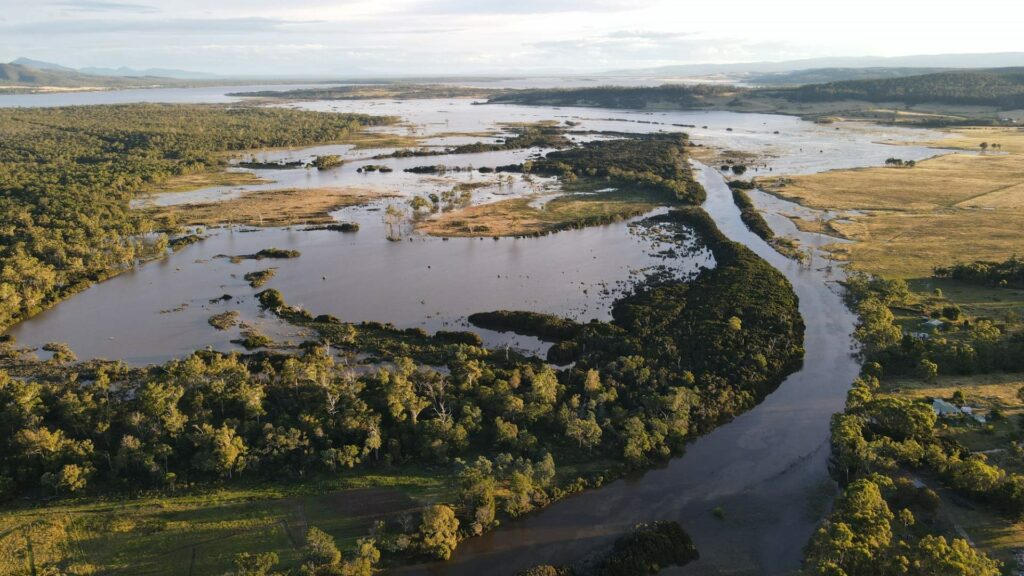Looking into the past is providing clues for future management of important wetlands in Tasmania’s south east. A four-year Australian Government funded project is working to improve the ecological condition of Apsley Marshes and Moulting Lagoon – two internationally important wetlands that serve as critical feeding areas for migratory birds and nursery grounds for commercial and recreational fish species.
Led by NRM South in collaboration with local farmers and landowners, on-ground works in the wetlands are underway. Planned works include removal of stock from sensitive saltmarsh areas, weed control and vegetation restoration and, in some areas, attempting to restore natural water flows
In late March, one of the key partners in this project, environmental organisation Nature Glenelg Trust (NGT), made their first visit to the wetlands to meet with local landholders. Weaving together historical data, community knowledge and modern technology, NGT will be attempting to create a picture of how the ecology and water flows of Moulting Lagoon have changed over the last two centuries – which will provide insights to help guide future management strategies for the wetlands.
Dr. Rosie Hohnen, Senior Project Officer with NRM South and project lead, commented on the value of having expertise from NGT in developing this project. “Nature Glenelg Trust have a great track record when it comes to collaborative work between farmers, public land managers and scientists on complex wetland issues across public and private land” she said. “We were very interested in partnering with them as they have successfully restored wetlands with farmers and landowners at many sites across south-eastern Australia.”
The first part of this task has involved talking to local landholders – some of whom have lived in the area their whole lives. Mark Bachmann, Principal Ecologist with NGT believes that the importance of local knowledge in developing project plans cannot be overstated. “The only way we can accurately piece together the drainage history of an important site like this, where incomplete records exists but we know some changes to drainage date back as far as the 1800s, is by listening to local landowners, as well as the local fishing and hunting community, and incorporating their knowledge into our work. Building our understanding of the wetlands’ history is absolutely critical to the scientific investigation we will also undertake.”
Dr. Hohnen also reiterated the value that community members would bring to the project. “The involvement and on-ground actions of local farmers is critical to conserving the wetlands’ values,” she explained. “And we’re also interested in speaking with anyone that may have historical knowledge or maps and images of the area in and around Moulting Lagoon and Apsley Marshes.”
The “Improving the Ecological Character of Apsley Marshes and Moulting Lagoon Ramsar Sites” project is supported by NRM South through funding from the Australian Government’s National Landcare Program and runs until June 2023. Anyone wanting to get in touch with Dr. Hohnen can reach her at [email protected] .
For project updates from Nature Glenelg Trust, visit https://natureglenelg.org.au/ngt-kicks-off-a-complex-eco-hydrological-investigation-on-the-east-coast-of-tasmania/
